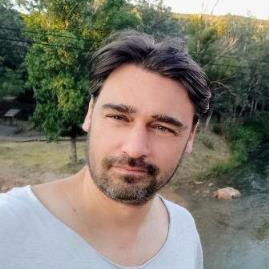Applications of Spectroscopy in Agriculture and Vegetation Research
A special issue of Remote Sensing (ISSN 2072-4292). This special issue belongs to the section "Remote Sensing in Agriculture and Vegetation".
Deadline for manuscript submissions: closed (31 May 2019) | Viewed by 84573
Special Issue Editors
Interests: imaging spectroscopy; vegetation properties retrieval; FLEX; vegetation fluorescence; optical remote sensing; radiative transfer models; retrieval methods
Special Issues, Collections and Topics in MDPI journals
Interests: precision agriculture; biophysical modelling; imaging spectroscopy; data assimilation
Interests: hyperspectral and thermal remote sensing; retrieval of biochemical and structural vegetation properties; water stress detection; crop nitrogen assessment
Special Issues, Collections and Topics in MDPI journals
Interests: crop SIF; phenotyping on LiDAR and UAV platforms; quantification of crop properties; disease surveillance; hyperspectral remote sensing
Interests: remote sensing of vegetation properties; ecosystem–atmosphere exchange of carbon dioxide and carbonyl sulfide (COS); fluorescence and COS as tracers for canopy photosynthesis
Special Issue Information
Dear Colleagues,
Vegetated ecosystems are an important component of terrestrial (agro)ecosystems largely mediating gas and energy exchange at the atmosphere–biosphere–pedosphere interface. The precise spatial and temporal acquisition of information about vegetation status, health, and photosynthetic functioning is fundamental to model the dynamic response of vegetation to changing environmental conditions.
This information can probably be best obtained with imaging spectrometers, which provide a unique opportunity to collect spectrally and spatially continuous data on vegetation traits at ecologically relevant scales over wide areas. With the ongoing progress of implementing imaging spectrometers in UAVs, aircrafts, and spaceborne missions, imaging spectroscopy has become a mature technique for capturing and quantifying vegetation properties and dynamics.
Apart from the steady progress in imaging spectroscopy sensor technology, also the continuing increase of computational power and the increasing availability and democratization of spectroscopic data have nurtured the recent boost in imaging spectroscopy science, leading to a methodological expansion and a diversification in vegetation-related applications. With imaging spectroscopy science now reaching maturity, it becomes feasible to compile recent applications in a dedicated Special Issue.
This Special Issue aims to address fundamental and applied research relating the spectral properties of vegetation to agronomic and biophysical variables, genetic and phenotypic parameters, as well as diurnal and seasonal dynamics linked to light harvesting and photoprotection.
Among the ongoing initiatives in this field, the CA17134 (SENSECO) COST Action, which aims to bring together scientists working on spectroscopy in agriculture and vegetation research, is a recent and prominent one. SENSECO places emphasis on investigating the role of spatial and temporal scales, as well as on promoting the synergistic use of multiple sensors at multiple scales and streamlining data quality and traceability. These kinds of initiatives intend to unite scientists to unravel the links between plant physiology, agroecosystem functioning, and biogeochemical cycles and will strengthen the progress in terrestrial imaging spectroscopy missions dedicated to vegetation monitoring (e.g., FLEX, EnMAP).
To gather a consolidated overview about the different activities around spectroscopy applications in agriculture and vegetation research within the COST Action and in connection with dedicated campaigns and satellite mission preparation programs, we invite papers on the following non-exhaustive list of topics:
- Progress made in spectroscopy studies: considering, e.g., reflectance and fluorescence data acquisition protocols and point clouds, state of the art and performance of instrumentation, retrieval methods, and modelling applications.
- Quantification of agronomic biophysical and biochemical variables: proximal sensing, UAV platforms for precision farming applications such as phenotyping, assessment of crop damage, identification of diseases, pests, water and nutrient management, growth status (LAI, biomass), photosynthetic activity, grain quality, crop acreage, and productivity.
- Multi-scale observations in the spatial and temporal domains to quantify and monitor leaf-to-ecosystem functioning and biogeochemical traits and cycles. Synergistic use of multiple sensors to bridge the scaling gap.
- Methodological progress in retrieval methods in the domains of machine learning, physical model inversion, hybrid methods, and from experimental-towards-operational methods and coupling of models and imaging spectroscopy.
- Quantification of dynamic vegetation functioning (stress, productivity) from hyperspectral reflectance, fluorescence, and point-data sources.
Dr. Jochem Verrelst
Dr. Tobias Hank
Dr. Martin Schlerf
Dr. Xia Yao
Dr. Karolina Sakowska
Guest Editors
Manuscript Submission Information
Manuscripts should be submitted online at www.mdpi.com by registering and logging in to this website. Once you are registered, click here to go to the submission form. Manuscripts can be submitted until the deadline. All submissions that pass pre-check are peer-reviewed. Accepted papers will be published continuously in the journal (as soon as accepted) and will be listed together on the special issue website. Research articles, review articles as well as short communications are invited. For planned papers, a title and short abstract (about 100 words) can be sent to the Editorial Office for announcement on this website.
Submitted manuscripts should not have been published previously, nor be under consideration for publication elsewhere (except conference proceedings papers). All manuscripts are thoroughly refereed through a single-blind peer-review process. A guide for authors and other relevant information for submission of manuscripts is available on the Instructions for Authors page. Remote Sensing is an international peer-reviewed open access semimonthly journal published by MDPI.
Please visit the Instructions for Authors page before submitting a manuscript. The Article Processing Charge (APC) for publication in this open access journal is 2700 CHF (Swiss Francs). Submitted papers should be well formatted and use good English. Authors may use MDPI's English editing service prior to publication or during author revisions.
Keywords
- spectroscopy
- reflectance
- fluorescence
- vegetation
- agriculture
- scaling
- sensor synergy
- biophysical variables
- quality
- productivity






